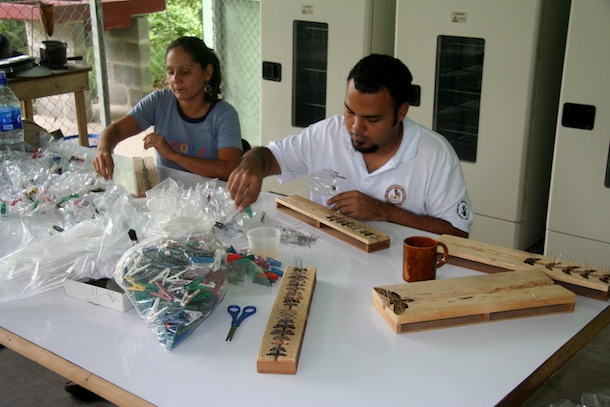In the global library of life, most of the books are today unread. There are far more unknown species than known species, and even fewer about which we know something. With human population growth and its insatiable diet, climate change, and habitat loss, we are approaching the end of the millennia-long race to know the natural world before we irretrievably lose what it was to us and what it still can be to us. But to read nature’s books, to even know they are there, we have to have to see them and put names on them – and there are way too few of us doing that, especially in biodiversity-rich tropical countries.
Many of the best taxonomists are retiring or dying, and they are not being replaced. The academic model of tenured specialists dependent on graduate students and conducting years of field and museum research is slow, expensive per species and inefficient, requires long absences from home, disfavors local knowledge, and does not build long-term biodiversity management capacity among those living in biodiverse regions, the social owners of that living biodiversity. A new approach is needed if there is to be any hope for bioliteracy among all 7 billion of us – to know, understand and gain from the life forms that share the planet with us, and with whom we have – generally unconsciously – partnered for millions of years.
The parataxonomists – an ACG and INBio nickname borrowed in 1989 from paramedics and paralegals – are the germination and base seedlings of a global solution. And then over the last decade, the founding members of GDFCF, along with partners in the scientific community, joined the parataxonomists’ field inventory of ACG with Professor Paul Hebert’s initiative at the Biodiversity Institute of Ontario to create and grow iBOL, the International Barcode of Life, centered at the University of Guelph and the Smithsonian Institution. This pioneers a new path to global bioliteracy using the technique of DNA barcoding in combination with the resident parataxonomists conducting the inventory of 400,000+ species of natural books in Area de Conservacion Guanacaste (ACG).
The result of DNA barcoding is a cost-effective, efficient, and highly accurate means of species identification and discovery of unknown and unexpected species. It has led to a dramatic expansion in knowledge about the numbers and kinds of species, as well as their behaviors. In particular, this tool is helping to solve one of the most vexing issues in taxonomy, the "cryptic species" problem. This problem exists where traditional, morphology-based taxonomy, usually initiated in the museum, sees one species (from small look-alike insects to great big whales) when in fact there may be two, four, ten, or even more separate species hiding under one name, as exposed when DNA barcoded.
To give an example of why this is significant one species of large ACG moth – Amphionyx lucifer – is actually two species; one spends all of its life in the Caribbean rain forest while the other migrates seasonally back and forth between ACG dry forest in the rainy season and Caribbean rain forest in the inhospitable dry season. And on close examination through their DNA barcodes, it now appears likely that both are undescribed, because the name belongs to a yet third look-alike from Mexico’s Yucatan Peninsula.
Understanding this kind of ecological dynamic gives serious new insights on food sources, reproductive habits, species’ interactions, species’ evolution, and conservation needs. And does it for tens of thousands of wild species.
How exactly does DNA barcoding work? We'd like to give you a visual tour of what happens with species discovery in ACG.
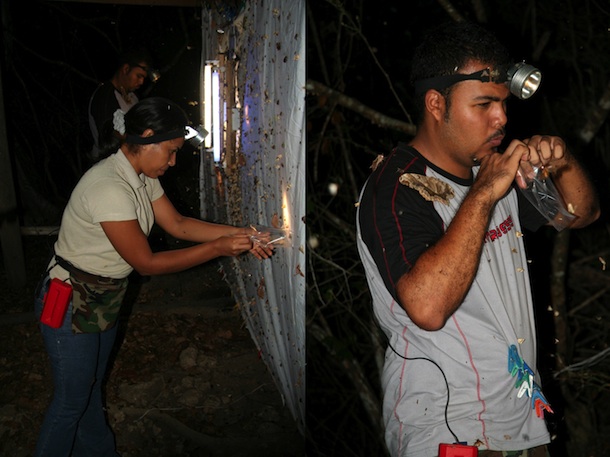
The ACG focus, which GDFCF supports in full force, is on finding all species of moths and butterflies (Lepidoptera), their parasites, and their food plants, for all of its terrestrial 1,200 km2. The Lepidoptera may be winged adults, as above at a car battery-powered light trap, or wild caterpillars from the plants they are feeding on in the forest, to be reared in captivity to see what species they are. This means find it, know who it is, know where it lives and what it eats, and document all that on the web. Roughly 10,000 species of moths and butterflies have been found out of an estimated 15,000 species, across the three forest ecosystems of ACG, along with 2,000+ species of parasites and 2,000+ species of food plants.
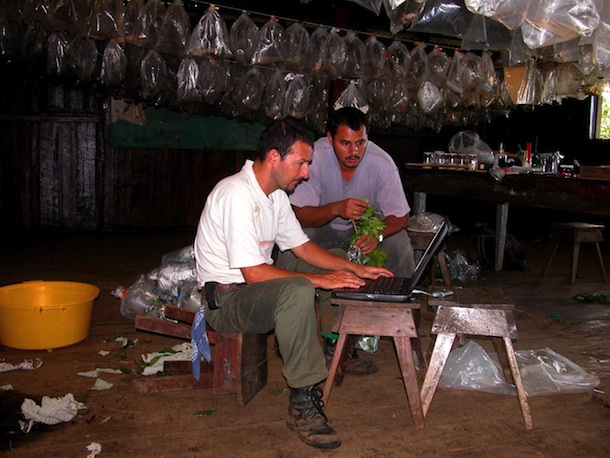
All documentation, including entering data into the database, identifying and if necessary saving a specimen of the food plant as a voucher, and photographs of the caterpillars, is done on-site by the parataxonomists – as you see here by Freddy Quesada and Harry Ramirez. What emerges from the pupae in the rearing bags is a moth or butterfly, or a parasitic fly or wasp that burrowed into the caterpillar before it was captured.
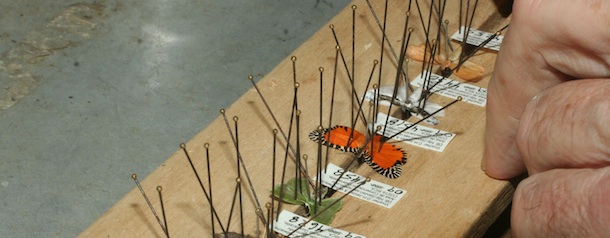
The initial identifications of caterpillars or winged adults are bestowed in the field, and then are checked against the existing inventory database. The parataxonomists' decades of inventory has made them local experts on many kinds of species of Lepidoptera, parasites and food plants. But they, like many others in the world of formal academic taxonomy, have long been fooled by the look-alikes. DNA barcoding has revealed to them a whole new layer of biodiversity hiding under what we thought we knew, as well as allowing accurate identification among thousands of species that can be distinguished by eye, but hide among the sheer numbers (see figure 4 below).
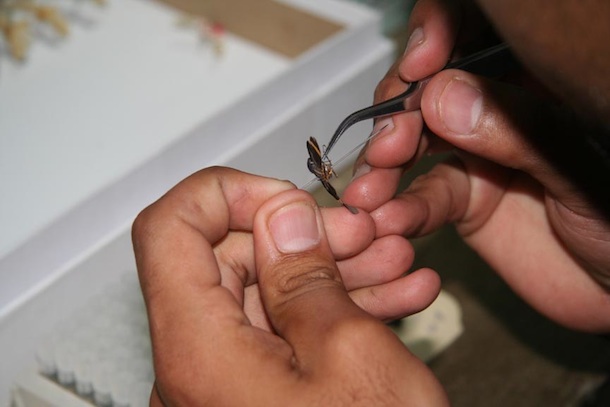
ACG has generated the largest collection of 5-legged insects in the world. The leg collected from the moths goes into a robot-friendly lysis plate with 94 companions, and is couriered to the Biodiversity Institute of Ontario at the University of Guelph for DNA extraction, sequencing, and the DNA barcode – a tiny snippet of DNA – recorded into the BOLD public database.
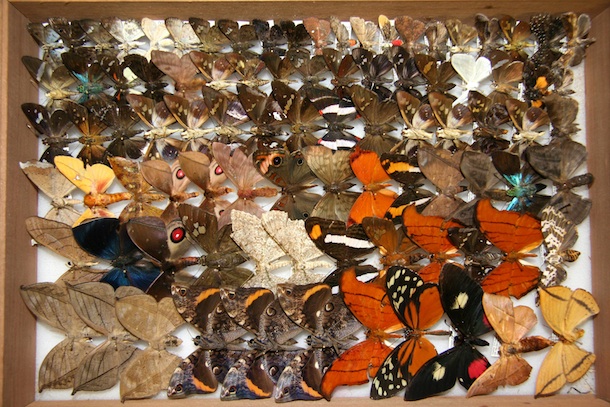
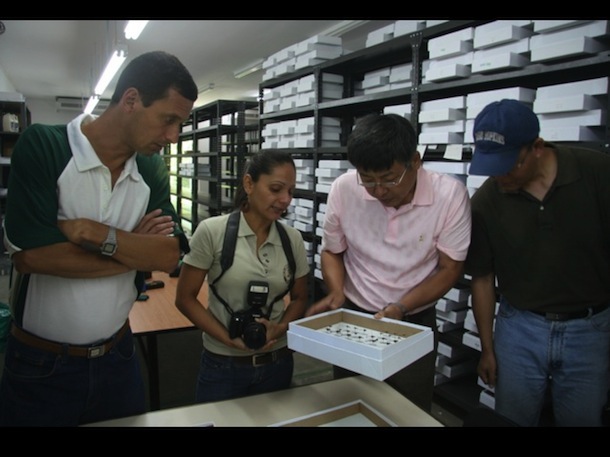
Once field-identified and field-databased, the samples are held in freezers at the research stations and then transferred to the ACG-GDFCF BioLep laboratory in the Estacion Biologica Santa Rosa in ACG’s Sector Santa Rosa. Here the specimens are further processed, labeled, and a decision made as to whether to destructively/sample/destroy, or DNA barcode and deposit in INBio in Santo Domingo de Heredia, Costa Rica, the Smithsonian Institution in Washington DC, USA, the Canadian National Collection in Ottawa, Canada, or elsewhere among the world’s scientific repositories.
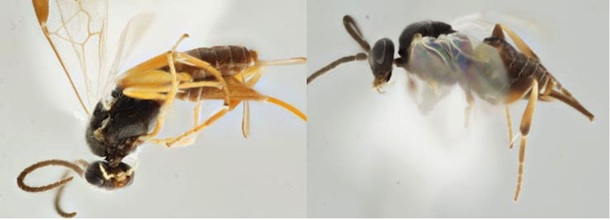
The DNA barcode is the only really certain way to distinguish this pair of wasps from each other and from the hundreds of other newly described species of nearly identical ACG wasps. Reared from an elevational pair of nearly identical butterfly caterpillars, Apanteles ruthfrancoae (left) lives on the lower slopes of Volcan Cacao in the center of ACG, and Apanteles duniagarciae (right) lives slightly higher on the same volcano. Both bear the names of the parataxonomists that work with them.
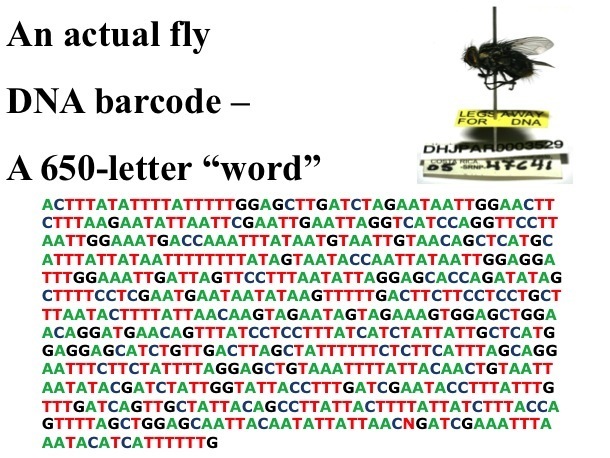
The newly generated barcode is added to the growing "Libary of Life" barcoding public database, BOLD, at the International Barcode of Life (IBOL), established to catalog planetary biodiversity. The set of barcodes generated by more than 200,000 ACG specimens found and documented by the GDFCF/ACG parataxonomists is the largest tropical dataset among the more than two million barcode records in BOLD. And for that species of fly we now have its license plate and can then connect any member of that species to any other information that humanity has about any other barcoded member of that species, IF you can read its barcode. We eagerly await the day when we all have in our back pocket something the cost and size of a plastic comb that will make the WiFi connection from anywhere, any time, by any one. This will be crowdsourcing of biodiversity by 7 billion-plus people.
By teaming with iBOL, the ACG-GDFCF team of 34 parataxonomists and their several dozen international collaborating taxonomists has mainstreamed the use of DNA barcoding to ensure precise identification and discovery of the literally tens of thousands of species being found by the parataxonomists in the ACG forests – as many as occur in North America, packed into an area the size of Philadelphia and its suburbs. Combining their 365/31/7 inventory intensity with the speed and accuracy of DNA barcoding, and integrating with classical taxonomy, literally opens tropical nature’s book of life: from pinpointing ecological relationships, accurating identifying biocontrol agents and sources of new chemicals and medicines, to identifying climate adaptation responses and conflicts, to fine-tuning resource management techniques, and perhaps most important of all, to allowing all of us the mental stimulation of the variety of life. Bioliteracy builds with knowledge, and this is especially for residents who become experts on their natural heritage and advocates for its survival. Years of practice have proven the effectiveness of this model. The task remains large in ACG even while this approach needs to be mainstreamed to the rest of the tropics. The growing use of DNA barcoding technology as a standard and personal taxonomic tool has proven that we can know the world’s biodiversity and we can share this knowledge with the entire world in a cost-effective way. The inventors will give us the backpocket barcorder, and global WiFi will give us billions of crowdsourcings to fill the library of life.
